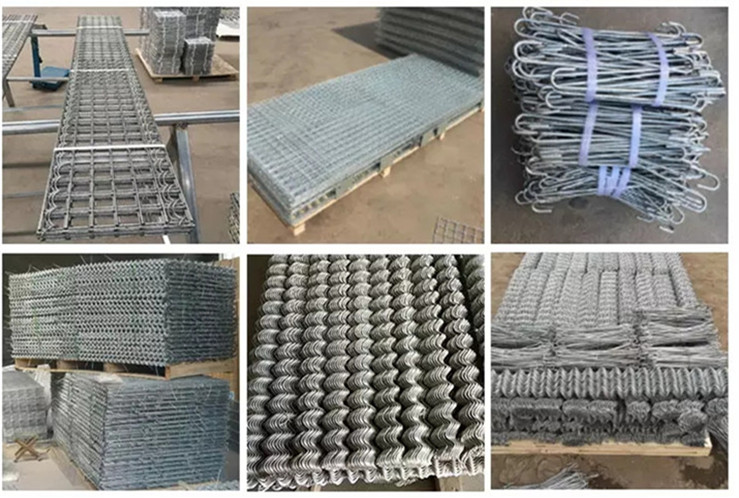Oct . 01, 2024 15:21 Back to list
Wire Mesh Gabions for Effective Landscape and Erosion Control Solutions in China
The Versatility and Importance of Gabion Wire in Construction
Gabion wire, a critical component in modern construction and landscaping, plays an instrumental role in the creation of gabion structures. These structures are wire mesh containers filled with various materials, primarily stone, and are increasingly popular for a range of applications including erosion control, retaining walls, and decorative landscaping. The use of gabion wire has been a game-changer in both civil engineering and environmental management, owing to its durability, cost-effectiveness, and aesthetic appeal.
Understanding Gabion Structures
Gabions, derived from the Italian word “gabbione,” meaning “big cage,” are essentially wire cages filled with rocks or other materials. The use of gabions dates back to ancient times when they were used for military fortifications. Today, the application of gabion structures has expanded significantly, primarily due to their effectiveness in controlling soil erosion and providing stability to slopes and embankments.
The wire used in these cages must be strong enough to withstand environmental pressures while remaining flexible enough to conform to the shapes created during construction. Gabion wire is typically made from high-quality steel or stainless steel, ensuring longevity and resistance to corrosion, especially when exposed to moisture and various weather conditions.
Applications of Gabion Wire
1. Erosion Control One of the primary uses of gabion wire is in erosion control. Gabion baskets, when filled with stones, create a sturdy wall that helps to prevent soil from washing away. This is particularly useful in coastal areas, riverbanks, and steep slopes, where soil erosion can be a significant problem.
2. Retaining Walls Gabion walls made of gabion wire are an excellent solution for retaining walls due to their strength and ability to manage water drainage. These walls, filled with stones, allow for the natural flow of water, reducing hydrostatic pressure, which is often a critical factor in the failure of traditional retaining walls.
china gabion wire

3. River Bank Protection Gabion wire structures are also commonly used for riverbank stabilization. By placing gabion baskets along the banks, the risk of flooding and damage from fast-flowing waters can be significantly reduced. The wire cages adapt to the natural contours of the riverbank, creating a structure that is both functional and harmonious with the environment.
4. Architectural Features Beyond functional uses, gabion wire has found its way into architectural design. Gabion walls can serve as attractive features in parks, gardens, and commercial landscapes, blending natural elements with contemporary design. The use of lighting effects on gabion walls can also enhance the aesthetic appeal at night.
Benefits of Gabion Wire
The advantages of gabion wire structures are numerous. The materials used for filling these cages are often sourced locally, which reduces transportation costs and environmental impact. Furthermore, the flexibility of gabion wire allows for easy installation and adaptability to various construction needs.
Gabion structures also provide excellent ventilation and drainage, which minimizes the risk of water accumulation and related issues. Additionally, they can be designed to integrate with natural landscapes seamlessly, promoting ecological balance.
Conclusion
Gabion wire is a vital product in the construction industry, providing solutions that not only enhance structural integrity but also contribute positively to environmental conservation. As the demand for sustainable and effective construction methods grows, the relevance of gabion wire will continue to rise. Its versatility in applications ranging from erosion control to architectural features showcases its importance in modern civil engineering, making it an essential material for any construction or landscaping project. Whether aiming for functionality or beauty, gabion wire delivers on multiple fronts, reinforcing its place in contemporary design and construction.
-
Hop Dipped Galvanized/PVC Coated Temporary Fence - Anping County Xingzhi Metal Wiremesh Products Co., Ltd.|Temporary Fencing Solutions, Durable Security Products
NewsJul.30,2025
-
Hop Dipped Galvanized/PVC Coated Temporary Fence-Anping Xingzhi|Durability&Cost-Effective
NewsJul.30,2025
-
Hop-Dipped Galvanized PVC Fence - Anping Xingzhi | Durable, Quick Deployment
NewsJul.30,2025
-
Hop Dipped Galvanized/PVC Coated Temporary Fence - Anping County Xingzhi|Temporary Fencing, Durable Security, Customization
NewsJul.30,2025
-
Hop Dipped Galvanized PVC Coated Temporary Fences - Anping County Xingzhi|Durable Corrosion Resistance, Quick Installation
NewsJul.30,2025
-
Hop Dipped Galvanized / PVC Coated Temporary Fence - Anping County Xingzhi Metal Wiremesh Products Co., Ltd|Durable Temporary Fencing&Versatile Applications
NewsJul.30,2025



